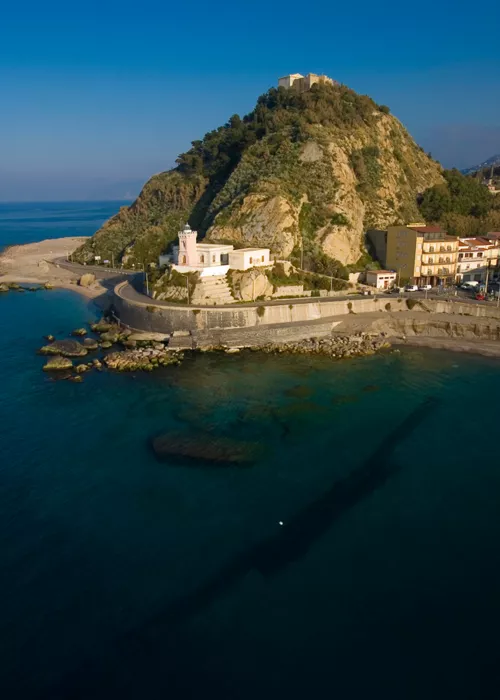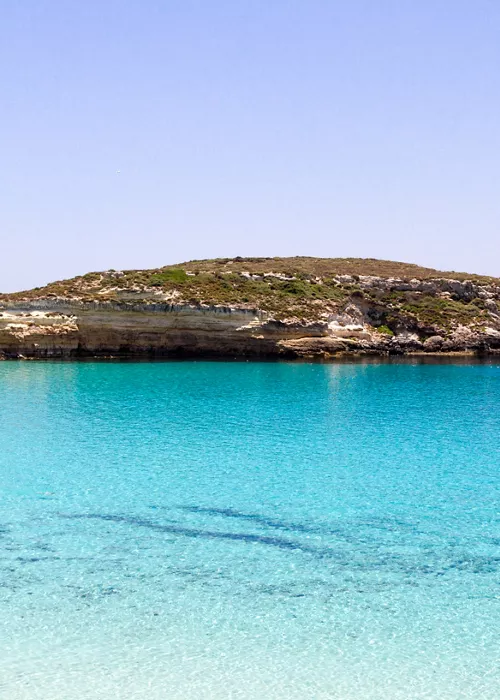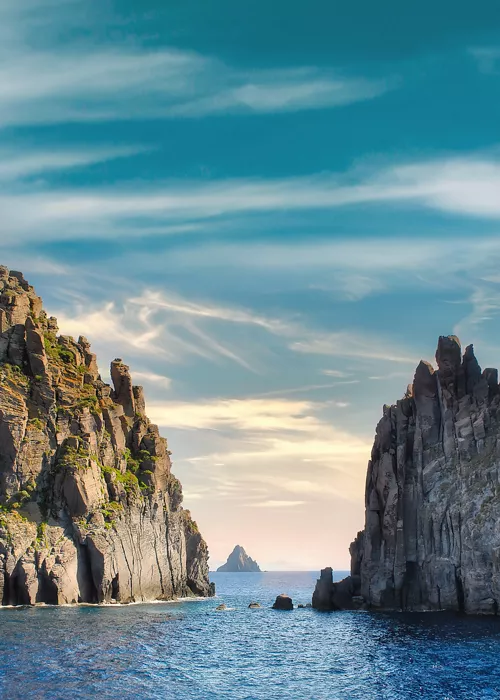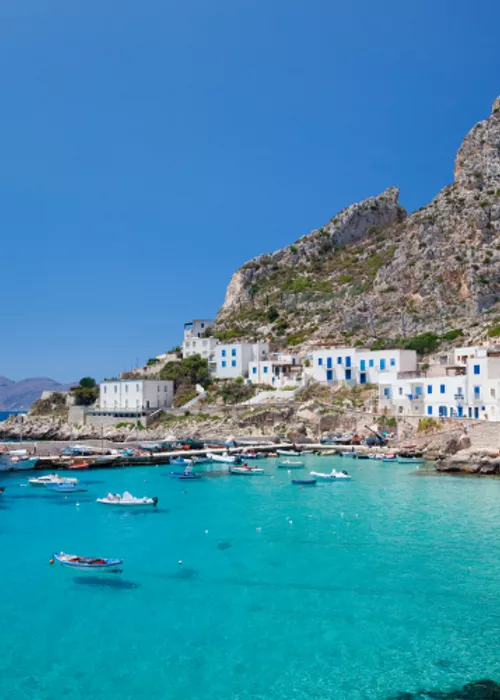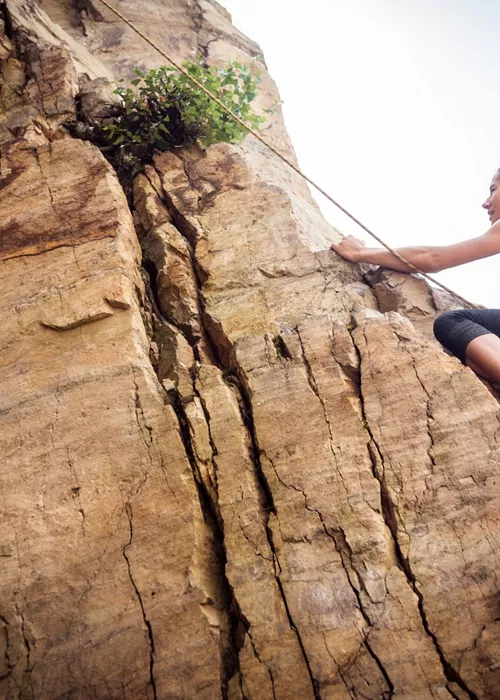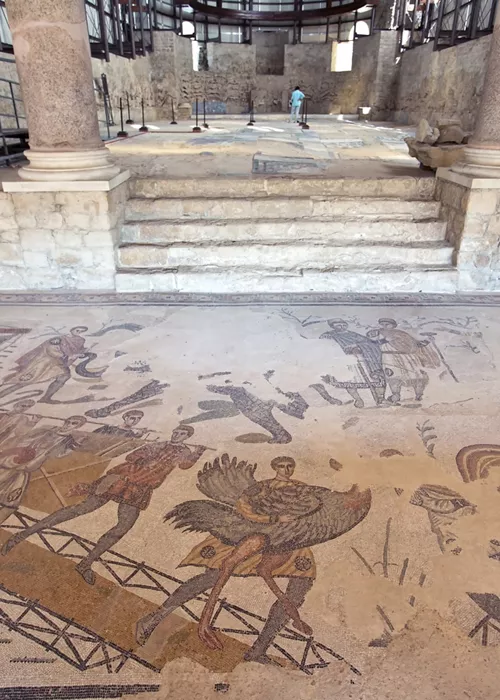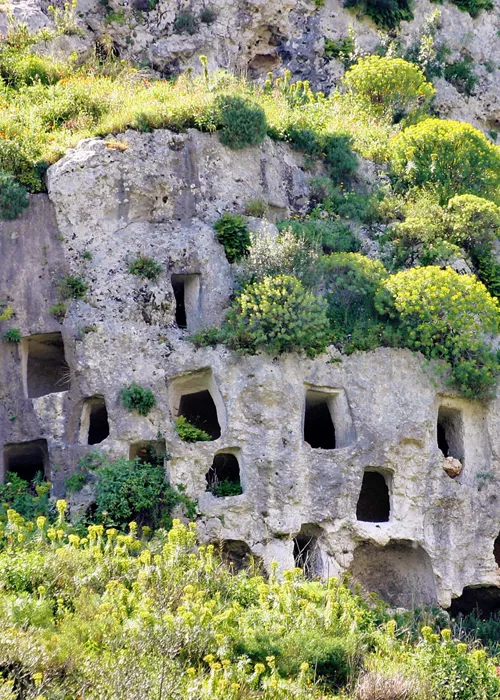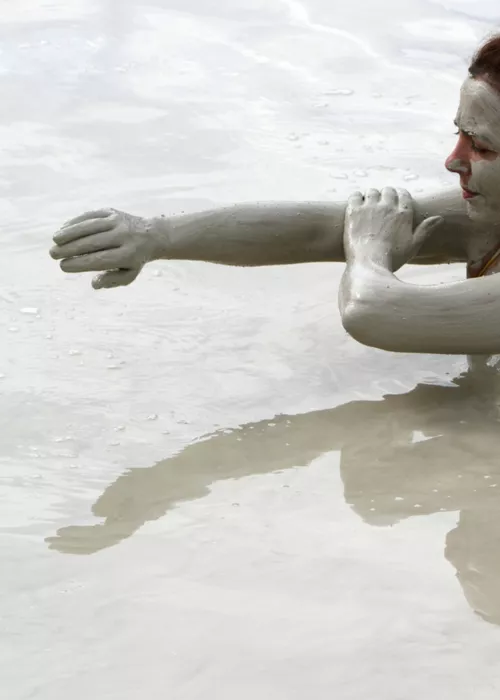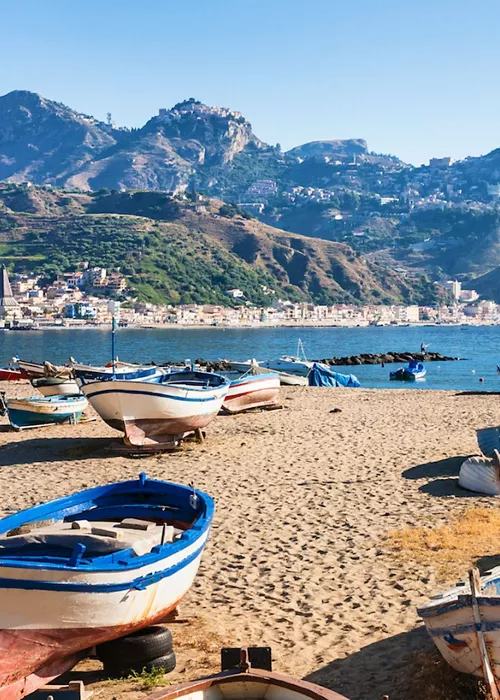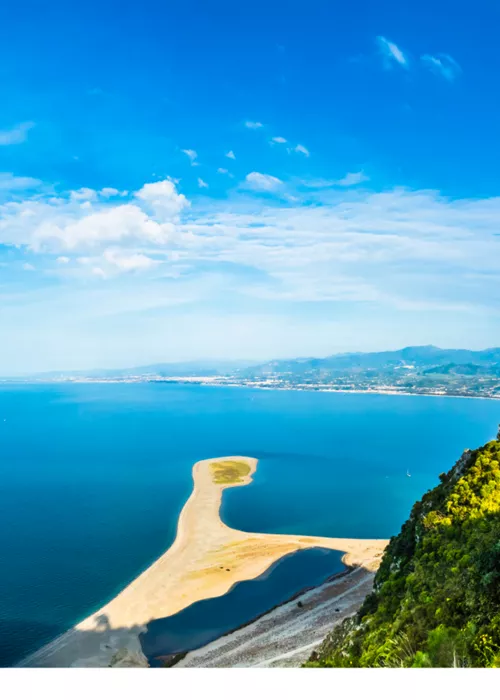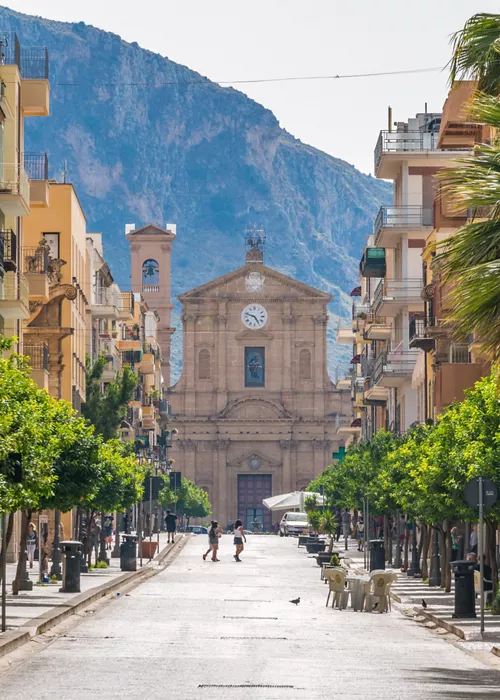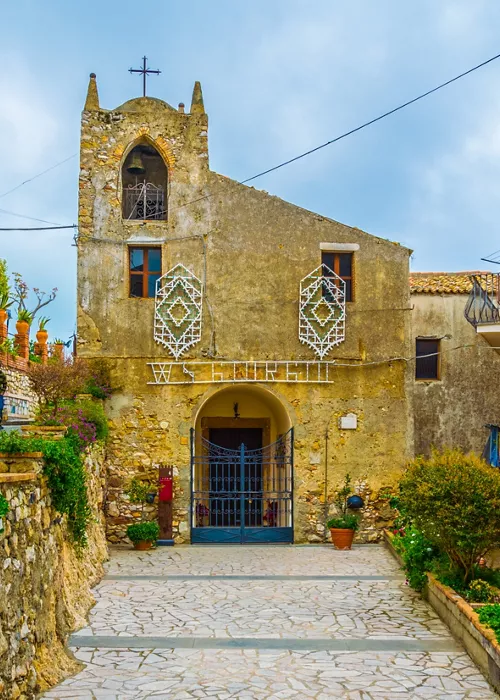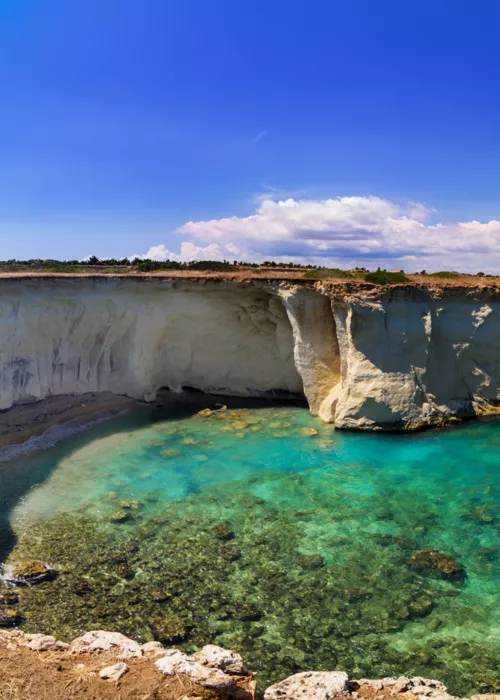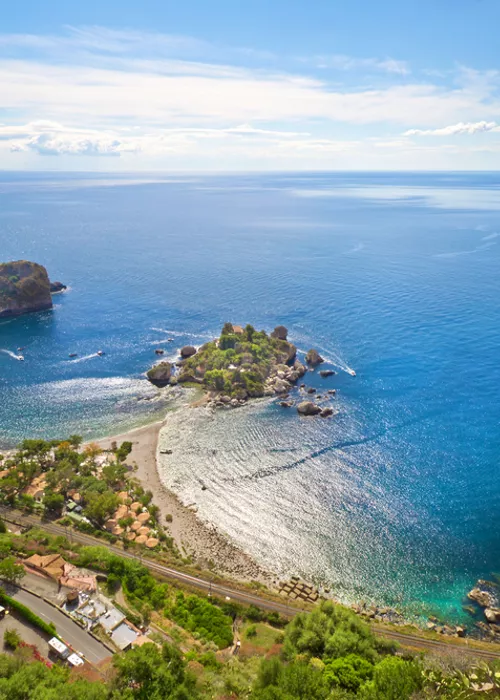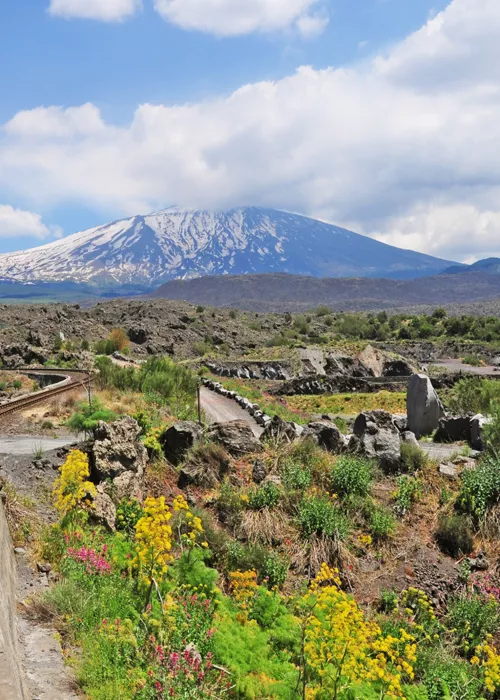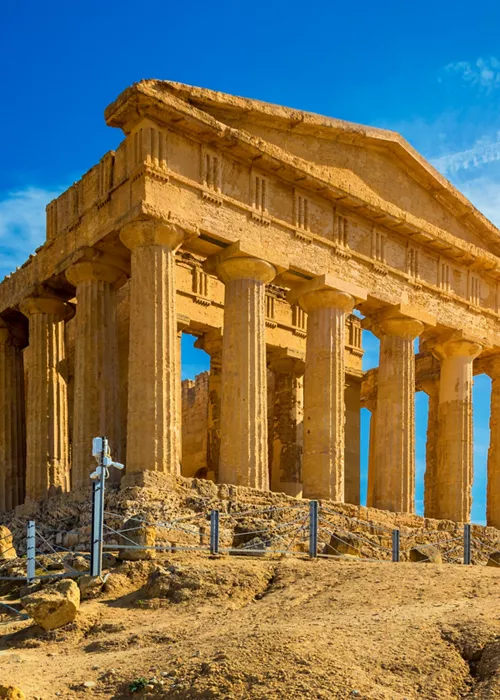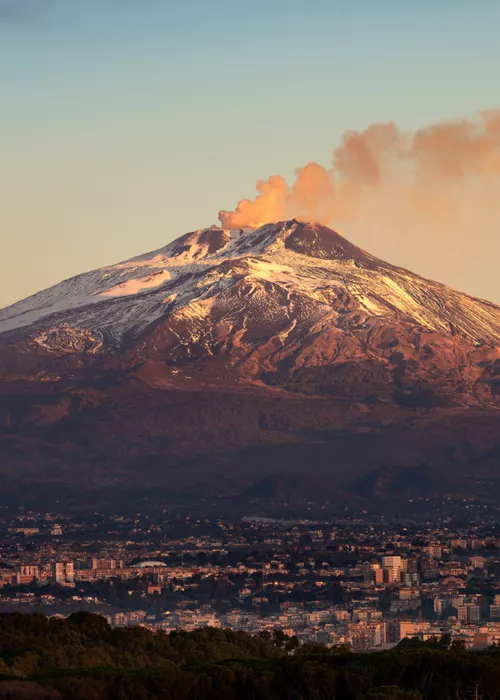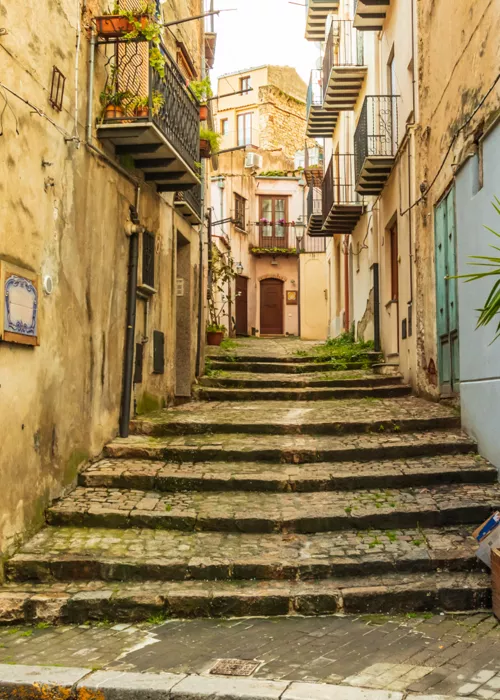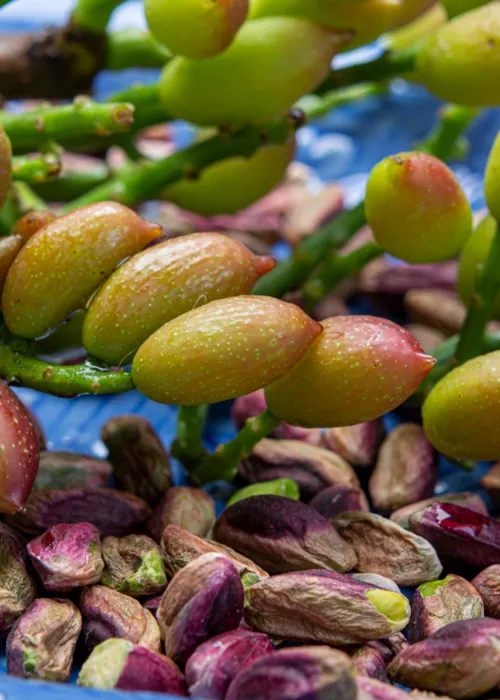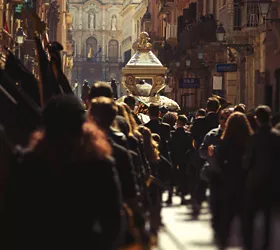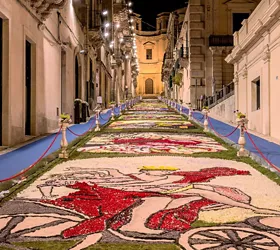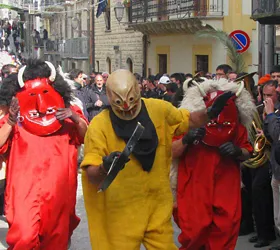San Vito Lo Capo: the Sicilian Tropic
On the north-western tip of Sicily, San Vito Lo Capo, with its three-kilometres beach of very light-coloured sand, ends where the Monte Monaco massif rises. Here, one of the island's most beautiful, protected areas, the Zingaro Nature Reserve, begins.
Nature could not have been more generous to a place that retains important signs of its past where Arab and European cultures met and merged, continuing to do so today.
Among ancient sanctuaries, wrecks and the remains of old tuna nets
Almost an island within an island, San Vito Lo Capo lies on the green promontory enclosed by the imposing Mount Monaco to the east and Mount Cofano to the west.
Visible in the middle of the countryside thanks to the small temple of Santa Crescenza, a place linked to the devotion of St Vitus. The Fortress Sanctuary, which dates back to the 5th century, is located closer to the sea: it is a fortified church that looks more like a bastion because the threat of the Saracens lasted for quite a while.
Also worth a visit is the Tonnara del Secco, active until 1969, located along the path leading to the Zingaro Nature Reserve, behind Mount Monaco, 3 km from the centre: on the seabed in front of the tuna fishery, the wreck of the freighter Kent that sank in 1978, called the ship of the Korans because it is said to have carried holy books.
On the west coast, towards Macari and Mount Cofano, dotted with numerous towers (Scieri, Mpisu and Isulidda), for swimming in the afternoon, then enjoy the sunset in the sea.
There are no sandy beaches, but the descent to the sea between the rocks is quite easy. In the countryside, you can walk a long way towards Castelluzzo, among cultivated fields and olive groves.
The Cous Cous Fest
One of the most popular events in San Vito lo Capo is the Cous Cous Fest, celebrating the dish of Maghreb origin made from durum wheat semolina, also popular on the Trapani coast.
A festival that went from being a culinary event to a moment of cultural integration celebrating the coexistence and diversity of peoples.
Held in the last week of September since the late 1990s, it is a challenge for chefs from all over the world to prepare the best couscous.
The side dish is a rich calendar of shows, cultural events, concerts alternating with tastings and visits to the area.
Don’t miss the Couscuola, the couscous school, a thirty-minute lesson to return home with the rudiments to prepare this tasty dish that brings the two shores of the Mediterranean together.
Mount Cofano reserve
Unmistakable is the silhouette of Mount Cofano, in the territory of Custonaci, an area protected since 1997 by the nature reserve of the same name.
The mountain is a steep-sided dolomite massif that was formed by the uplift of marine limestone deposits during the Triassic period. The ascent to the mountain is quite challenging, as its morphology suggests, but there is a very nice and easy path that goes all around the mountain, overlooking the sea.
The Reserve's caves are interesting, with traces of prehistoric settlements, such as the Mangiapane cave in the Scurati locality, an 80-metre-high cavern, at the entrance of which are dwellings that were used until a few decades ago: one of Sicily's most evocative living nativity scenes is set here at Christmas.
Also of interest are the 16th-century towers commissioned by the Spanish kings: from the San Giovanni tower you can see the panorama of the Egadi Islands, and the star-shaped one at the Tonnara di Cofano.



-1?wid=1240&hei=500&fit=constrain,1&fmt=webp)
